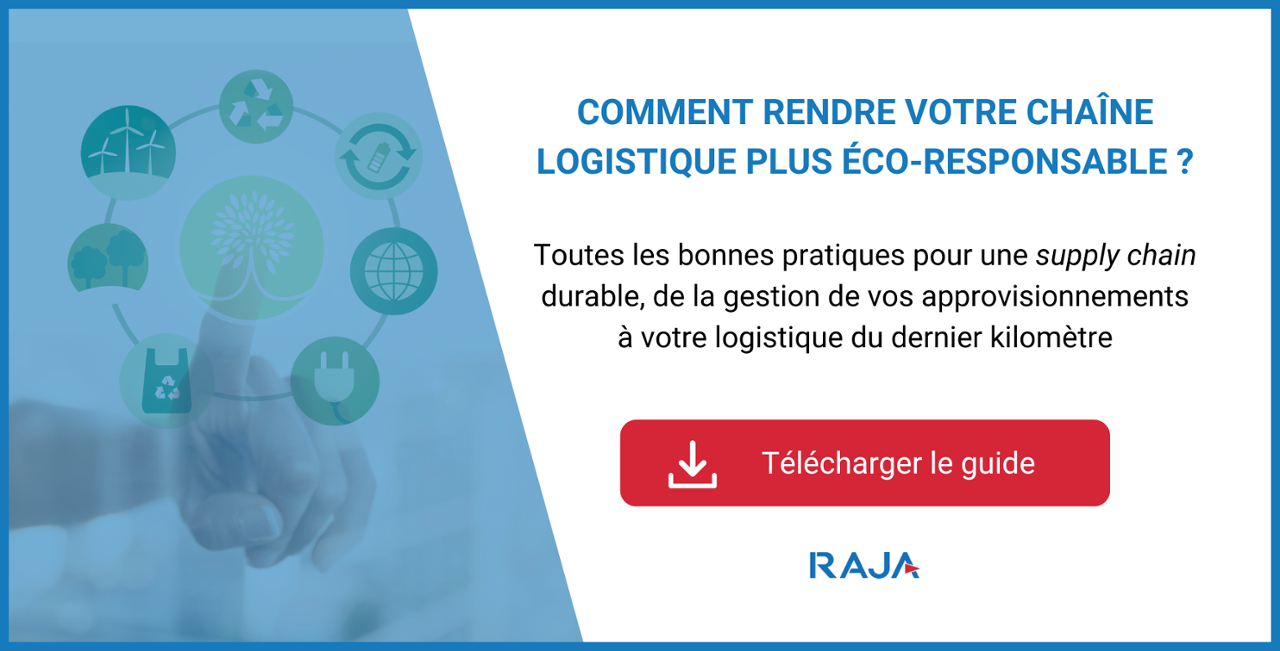The logistics sector has always been adapting, and this has been especially true in recent years. Indeed, there have been many challenges, from the Covid-19 pandemic to the current geopolitical tensions. The rapid growth of e-commerce and the demand for shorter delivery times are also pushing the logistics sector to innovate. We must constantly adapt to the current context.
Why stay at the forefront of logistics innovation?
The logistics sector is increasingly moving towards greener, more sustainable solutions. Indeed,in 2022, it is a necessity for logistics players to respond to current environmental challenges. At the same time, consumers have increasingly high expectations in terms of ecology. Staying at the forefront of logistical innovation therefore allows us tomeet these new requirements.
In addition, digitalisation and new technologies bring more transparency, reliability and credibility to the supply chain. This enables companies to examine their entire logistics process in the best possible way. Risks and optimisation potentials are thus better identified.
Investing in greener logistics solutions is also an advantage in theface of rising energy and fuel prices. The result: the company’s profitability is improved and customer satisfaction is optimised. Finally, an interest in logistics innovations also means an interest in the automation of processes through robotics. This major trend in the sector is known tosave time and increase profitability, which is another good point for innovation.
Some companies are apprehensive about exploiting new innovations, and this may be understandable. Nevertheless, the world is changing, and it is better to adapt gradually so as not to be left behind.
Today ,logistics innovations are emerging to become real guides for professionals in the sector. Here are 5 trends and innovations in the supply chain to discover at the end of 2022.
Automation through robotics
In full swing for several years, the logistics robots are now present in many companies. Robotics canimprove logistics processes and reduce costs. Entrusting complex tasks to logistics robots is an innovative solution to reduce risks and drudgery for operators. It also helps tospeed up the pace, as in the case of the automation of the order picking phase.
Do nothesitate to consult our guide to automating or mechanising your order pickingto get a better understanding of the different solutions. Finally, autonomous driving will gradually make its appearance in logistics companies. Drones and autonomous vehicles are used for internal goods transport, but also externally to complete the logistics chain.
The rise of quick commerce
The Covid-19 pandemic period had a strong impact on consumer habits. The number of online orders increased considerably, particularly during the containment episodes. This new demand has pushed companies to adapt in terms of delivery times. With the rise of Quick commerce, the promise of logistics players is delivery in a very limited time, usually 10 minutes to 1 hour.
To make this possible, the sector has adapted by creating urban logistics solutions. From dark stores and urban micro-warehouses (commonly called micro-fulfilment centres) have appeared in cities. These small warehouses allow goods to be stored close to densely populated areas, with the aim ofreducing delivery times as much as possible. This is an optimal logistics innovation for the last mile.
Sustainable development at the heart of logistics processes
Ecology is a major concern in all sectors. Obviously, logistics is no exception and theenvironment a real challenge for the sector. On the one hand, consumers are paying more and more attention, encouraging this trend to go green.
On theother hand, on1 January 2023, a law on supply chain vigilance will come into force. The origin of products, manufacturing conditions, or the recyclability of products: companies will be obliged to be more vigilant in this respect. In this sense, sustainability cannot be excluded. For companies that have made the switch in 2022, this will be a major competitive advantage.
Digitalisation of the supply chain
The supply chain has entered thedigital age inrecent years . Software is an integral part of the notable logistical innovations. From powerful management software companies are now supported by powerful management software. The smooth running of a warehouse depends on it.
From Warehouse Management Systems (WMS) for stock management and control, to software for controlling mechanised logistics equipment such as automats (WCS or Warehouse Control Systems), data is collected, centralised and organised to optimise the supply chain to the maximum.
The use of blockchain technology, NFT (Non Fungible Token) data and machine learning
Last but not least, we will talk about blockchain technology. The supply chain has recently taken hold of it in order to store and transmit information in a secure and transparent way. One of the aims of this technology is to store and authenticate NFT data, ensuring thatthis data is tamper-proof.
It isalso possible to combine blockchain technology with machine learning. Machine learning allows machines to learn without having been specifically programmed to do so. Together, these two technologies can produce very powerful and useful results.
In the logistics sector, this translates into faster and more secure information exchange between the various players, from supplier to customer. Finally, blockchain is also an effective way of guaranteeing product traceability. It is therefore an essential technology for the entire supply chain.
Improving processes, optimising performance and profitability, becoming irreproachable in terms of customer satisfaction… Logistics trends and innovations have multiple objectives, and above all respond to the need for evolution in the sector and in companies. Will you, in turn, follow the path of modernisation?















